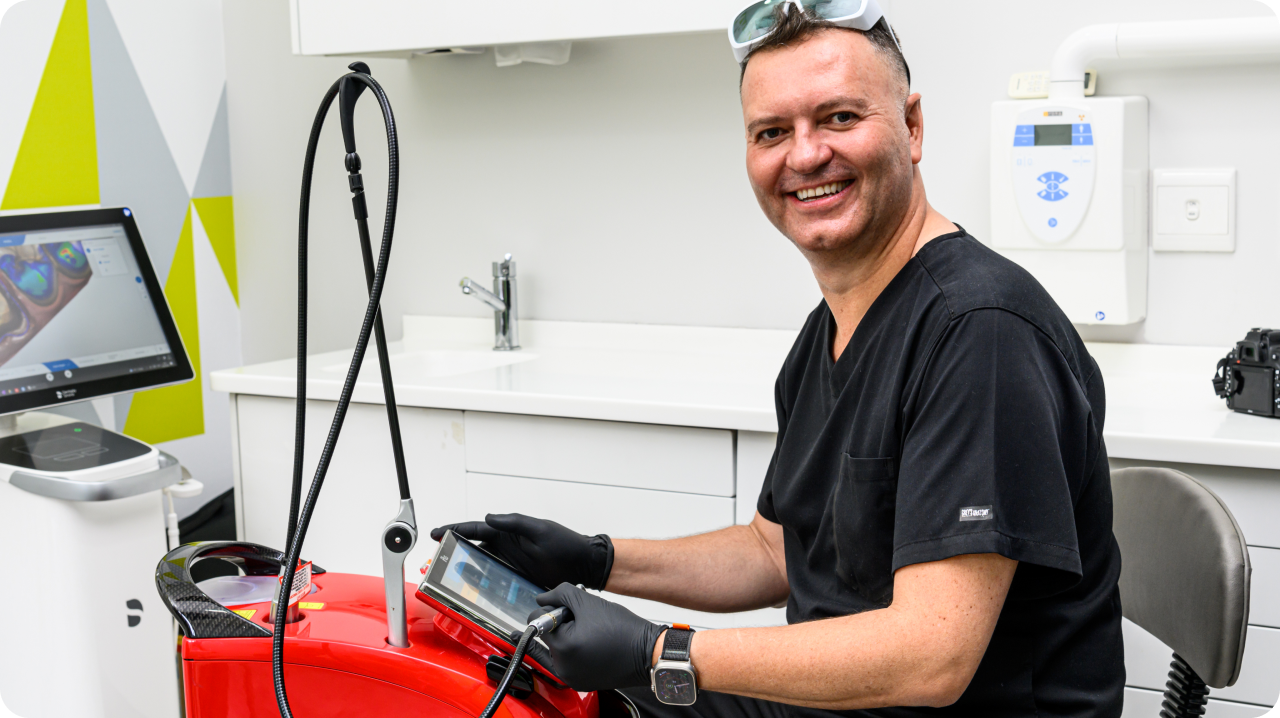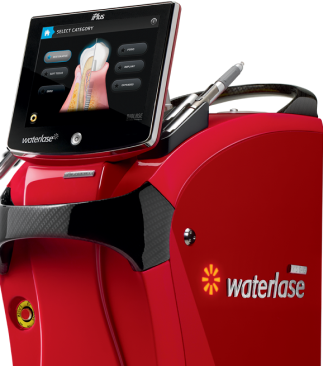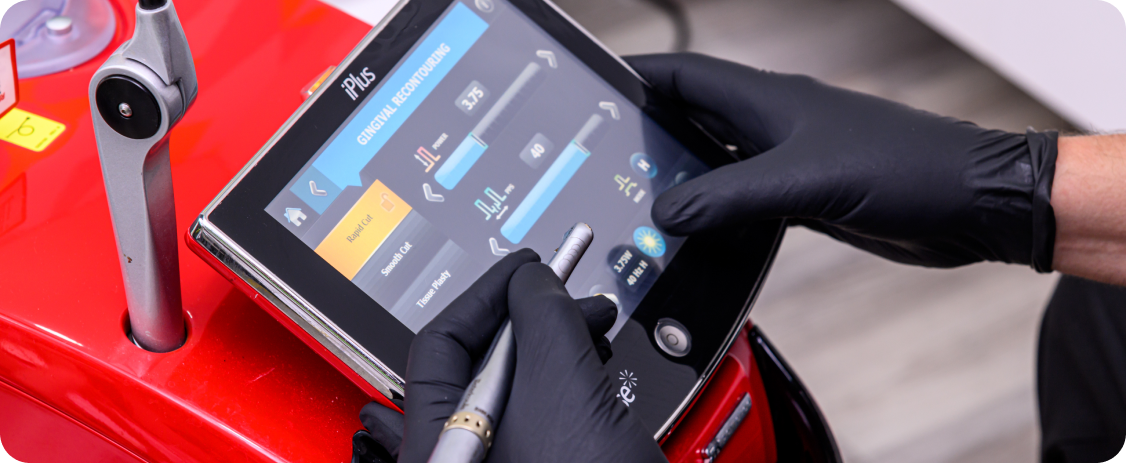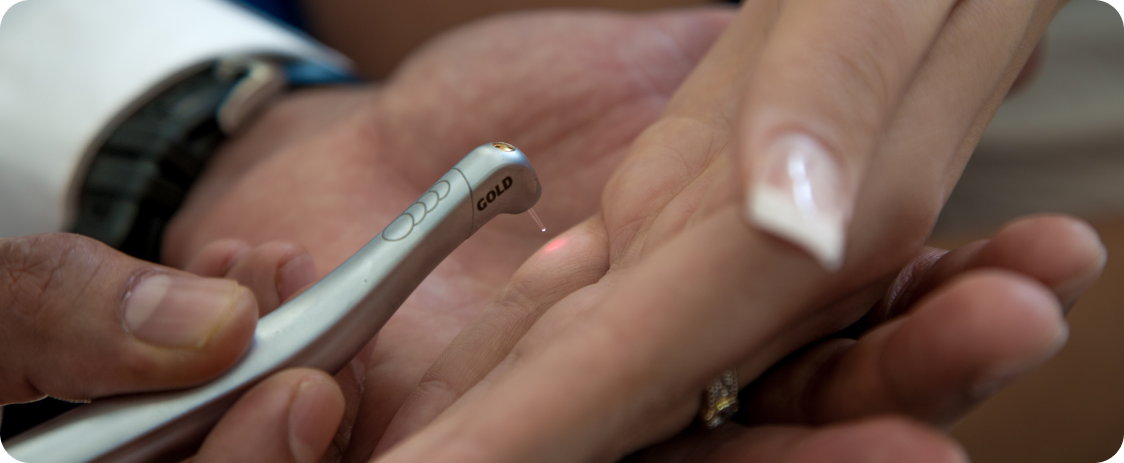
Lasers in dentistry for General Practice
Lasers in dentistry refer to the use of laser technology for various dental treatments. Laser is an acronym for “Light Amplification by Stimulated Emission of Radiation.” Laser technology has been used in dentistry since the 1960s, but it wasn’t until the 1990s that it became more widely adopted in dental practices. Laser dentistry refers to the use of lasers in dental procedures as an alternative to traditional dental tools like drills and scalpels. Lasers, which are concentrated beams of light energy, can be used for a variety of dental applications, including treating tooth decay, gum disease, and teeth whitening, as well as for surgical procedures.
The development of the Er:YAG and Er,Cr:YSGG (Waterlase) lasers in the 1990s allowed for more precise cutting of hard tissue, such as enamel and dentin, with minimal damage to surrounding tissue as well as soft tissue.
Today, lasers are used in a wide range of dental treatments, including cavity detection, gum disease treatment, teeth whitening, and even implant surgeries. Lasers offer several advantages over traditional dental treatments, including reduced bleeding, less pain, and a faster healing time.
The latest technology in lasers makes the use of lasers in the general dental practice accessible. The properties of the laser, specifically its wavelength, as well as the optical properties of the target tissue is important for the type and extent of the interaction that will occur. The laser wavelength and optical properties of the target tissue will determine the depth of penetration and the absorption in the target tissue.
At this point optimal characteristics of a laser should be:
· Cutting precision
· Interactive selection within the tissue
· Minimally invasive
· Safety
· Patient comfort
· Compatibility with high tech adhesive systems.


Some advantages of laser dentistry include:
Reduced pain and anxiety: Lasers can often be less painful than traditional dental instruments, reducing the need for anaesthesia in some cases. This can help ease anxiety for patients who are nervous about dental procedures.
Minimized bleeding and swelling: Lasers can be more precise and cause less damage to surrounding tissues, which may result in less bleeding and swelling after procedures.
Faster healing: The precision of lasers and their ability to sterilize the treatment area can lead to faster healing and reduced risk of infection.
Preservation of tooth structure: Lasers can remove decay and prepare teeth for fillings more conservatively than traditional methods, helping to preserve more of the natural tooth structure.


Waterlase offers several advantages over traditional dental tools:
Minimally invasive: The combination of laser energy, water, and air allows for precise cutting and removal of decayed or damaged tissue, while preserving healthy tooth structure and reducing trauma to the surrounding areas.
Versatility: Waterlase can be used for a wide range of dental procedures, including cavity preparation, gum disease treatment, root canal therapy, and oral surgery. This makes it a valuable tool for dentists who want to offer comprehensive treatment options to their patients.
Reduced anxiety: For patients with dental anxiety, Waterlase can provide a more pleasant experience, as it eliminates the noise and vibration associated with dental drills.
Despite these benefits, there are some limitations to Waterlase:
Four responses are described when a laser beam hits the target tissue: reflection, absorption, transmission and scattering. Some of these responses are diffused and not in straight line. The interaction of laser energy with target tissue is mainly determined by two non-operator-dependent factors: the specific wavelength of the laser and the optical properties of the target tissues.
Spectrum of light, with different wavelengths and types of lasers used in Dentistry.
Several types of lasers are available based on their wavelengths, which can be used in surgery. Laser technology is adjunct to conventional dental surgery. Lasers had many documented advantages and contributed to the daily practise and dental care.
With the advances in technology, the knowledge of applications and our understanding of the great spectrum of lasers, lead us to an exciting future.
A valuable property of the Waterlase wavelength is that it is well absorbed in water, collagen and hydroxyapatite. This allows the laser to cut soft tissue, tooth structure and bone. It performs soft tissue sculpting with adequate haemostasis. This makes the Er,Cr:YSGG an all-tissue laser for the multidisciplinary dentist. It delivers a high level of control, operating efficiency and flexibility in accessory tip selection. This high-tech dentistry enables dentists to preform various procedures only thought to be possible by the conventional scalpel or drill.
Importantly, lasers of all wavelengths have been grouped together in the literature instead of looking at each wavelength separately, with their potential interactions and benefits. These benefits are diluted in certain systemic reviews and caution is advised at the conclusions derived because of low numbers of studies as well as differences in methodology and protocols. Patient outcome is of great importance and there is a significant need for more clinical studies in the literature.


Laser dentistry has become increasingly popular in general dental practices due to its precision, effectiveness, and patient comfort. Some common applications of laser dentistry in general practice include:
Treatment of tooth decay: Lasers can be used to remove decayed tissue and prepare teeth for fillings. They are more precise than traditional drilling methods, which can help preserve more healthy tooth structure.
Gum disease treatment: Lasers can be used to treat gum disease by removing bacteria and infected tissue from periodontal pockets. This process is called laser-assisted periodontal therapy. Lasers can also be used to reshape and contour gum tissue for cosmetic purposes.
Teeth whitening: Laser teeth whitening is a popular cosmetic procedure that uses laser energy to activate a bleaching agent, resulting in a faster and more effective whitening process.
Dental surgeries: Soft tissue surgeries like frenectomies (removing the frenulum) and gingivectomies (removing excess gum tissue) can be performed with lasers. Lasers offer reduced bleeding, faster healing, and less postoperative pain compared to traditional surgical methods.
Biopsy and lesion removal: Lasers can be used to remove small tissue samples for biopsy or to remove benign oral lesions, such as fibromas and mucoceles.
Cavity detection: Diode lasers can help detect early signs of tooth decay by identifying changes in the tooth’s reflection properties.
Endodontics: Lasers can be used to clean and disinfect root canals during root canal treatments, which may lead to a higher success rate.
Treatment of cold sores and canker sores: Lasers can help reduce pain and promote faster healing of these oral lesions.
“Laser- and Digital Dentistry is fast becoming the new normal in the modern dental practice.”
